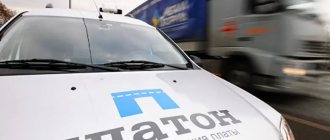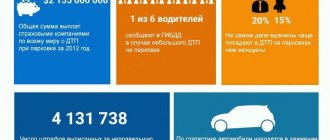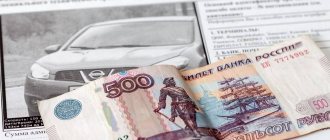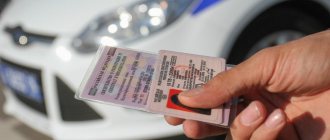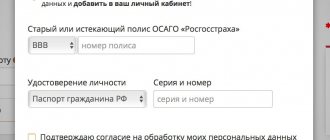A traffic controller is a rarity on modern city streets. Many drivers have only seen him in movies or children's books, and therefore have no idea how to react to the signals of a traffic controller when he suddenly appears at an intersection. In addition, a person dressed in uniform does not necessarily wave a baton and blow a whistle. He often gives instructions with his hand - this does not make them any less significant. All road users must comply with them: drivers, cyclists, pedestrians.
Who is a traffic controller and why is he needed?
A traffic controller is a policeman or military man who is entrusted with the responsibility of controlling traffic using symbols. To prevent drivers and pedestrians from being tempted to ignore him, the guard is dressed in a special uniform/equipment. There should be an insignia on his clothes that tells him that this person is worth obeying for his own safety.
Although most drivers believe that the police always regulate traffic, in fact this responsibility can be taken on by traffic police officers, road services, railway crossing attendants and other officials. The only thing that is required of them is knowledge of the signaling system, understanding of traffic and the ability to quickly deal with any situation.
Traffic controller signals
It is worth learning by heart, because this person appears on the road when there is a traffic jam or other problems arise. Of course, we are used to obeying traffic lights, but sometimes they fail. For example, during a power outage, all traffic lights within a block may go out. How do motorists behave in such cases? The most daring pretend that they are moving along the “green corridor”. Others try to let pedestrians and cars pass from the main road. This creates confusion, and the guard is called upon to eliminate it.
Specially trained people with a baton and a whistle appear on the roads after major accidents to prevent chaos and traffic jams.
How do traffic lights and traffic controller signals
? Who to believe if there is a traffic light at an intersection, but a person in uniform gives completely different signs? It's simple: the guard has priority - even before priority signs. Other road signs remain valid. Moreover, an official can sometimes direct drivers even under prohibitory markings, don’t let this bother you. If a guard urges you to ignore some signs, it means that an accident has occurred, repair work is underway, or the streets have been blocked in honor of a holiday. The guards are not fined for following the instructions.
At the most important intersections for urban traffic, a special person can be placed even when the traffic lights are working and there are no traffic jams. This is done for double control, so that there is someone able to visually assess the situation.
Traffic controller signals and their meanings
Traffic controller signal: right hand raised up
It doesn’t matter which side the traffic controller is facing towards you (front, back or side) - in any case you must stop. A traffic controller's raised hand or stick is a traffic ban for both pedestrians and drivers.
Signal from traffic controller: both arms are lowered or spread to the sides
If you are on the side of the inspector’s chest or back, then passage is prohibited for you
. Of course, it is easier to notice the traffic controller’s arms spread to the sides, but on a narrow roadway the inspector (for reasons of his own safety) may not spread his arms, but lower them along his body.
In order to remember the meaning of this signal from the traffic controller, driving schools force you to learn the rule: “Chest and back are a wall!” In other words, if you are on the side of the inspector’s chest or back, then passage is prohibited for you. If the inspector is facing you with his left or right side, you can drive straight or turn right.
Traffic controller gesture: right arm extended forward
In this case, the meaning of the traffic controller’s gesture depends on which side of the traffic controller you are on.
If an inspector with his right arm outstretched stands with his back or right side to you, then movement is prohibited for you
If the inspector is facing you with his right hand extended forward, it is worth remembering another rhyme that is taught in driving school: “The inspector pokes a stick in your mouth - make a right turn.” In this case, you are only allowed to turn right.
If an inspector with his right arm outstretched stands with his back or right side to you, then movement is prohibited for you. The inspector seems to be blocking your further movement.
And if the inspector with his right arm outstretched is standing with his left side towards you, then you have the opportunity to move in any direction: straight, right, left and around. In driving school they remember it like this: “If the stick points to the left, drive like a queen.”
Table for memorizing traffic controller signs
| Signals and gestures | |||||
| Face or back | Sideways, arms down or outstretched | Facing the driver, gesture points to the car | Right hand raised | Sideways, wand on the right side | |
| Cars, trucks, motorcycles | You can't move, slow down | You can move | Right turn allowed | Movement Prohibition | You can't move, stop |
| Trams | Let's start moving straight | ||||
| Pedestrians | Passing in front of or behind the guard is allowed | You can only cross behind the traffic controller's back. | |||
Traffic controller signs according to traffic rules
- The right hand extended upward . This command means that the driver should not pay attention to road signs and traffic lights. The road user must stop at the stop line and wait for the traffic controller's signal to continue driving. It doesn't matter which way the employee faces you. It is necessary to immediately respond to its action. The command applies not only to drivers, but also to pedestrians. Traffic rules state: if the driver fails to stop at the command of the traffic controller, he has the right to complete the maneuver. This rule also applies if the driver managed to enter the intersection before the traffic controller sign. In this case, the employee himself allows the maneuver to be completed and the roadway cleared so as not to interfere with other participants. A raised hand is associated with a yellow traffic light, which indicates to the road user that it is necessary to prepare for further action.
- Arms are spread to the sides or lowered . This situation means that moving onto the chest and back of a police officer is prohibited. Movement to the right and straight can be continued by those to whom he is standing sideways. This rule also applies to pedestrians. They can only continue moving parallel to the traffic controller.
- The hand points forward . If the traffic controller is looking at us, then we are only allowed to go to the right. If he stands on his right side, then movement is prohibited. The driver does not have the right to continue driving even if the traffic controller has his back turned, regardless of what commands he gives. If he stands on his left side, movement is allowed in all directions.
Traffic controller gestures in pictures with explanations
The traffic controller raised his hand up
If the traffic controller raised his right hand up, what
this
means
? The command implies that there is no need to pay attention to traffic lights and road signs. Instead, stop and wait for further instructions. In this case, it does not matter whether the traffic controller is facing you or with his back to you. But if you do not have time to complete the maneuver, no problem: complete and stop, this will not be a violation.
A raised hand can be considered a kind of analogue of a yellow traffic light.
If the traffic controller has his hands down
This is the position of the traffic controller's hands
prohibits movement towards him behind his back. Only those drivers in relation to whom he is standing sideways drive straight and to the right. Moreover, the command also applies to pedestrians; they can only cross the road parallel to the guard.
Right arm extended forward
This is the position of a traffic controller on the road
can be interpreted differently, depending on how the car is positioned in relation to the person. If he has his arm outstretched and his face is turned in your direction, you can only go to the right. If the traffic controller is facing you with his right side or back, you are prohibited from driving. Another thing is if he is standing with his left side towards you, you can move in any direction. Look, the logic here is this: the guard shows the corner that you cannot cross.
Additional traffic controller gestures
- Rotate the baton in front of the chest: Drivers on the right and left should speed up. Drive fast!
- A sharp downward movement of the hand and an indication to the left: complete the turn to the right.
- Signal to stop when you are already at the intersection: complete the movement while the traffic controller is looking at you.
Types of signs
To give signals, the inspector uses a disk with a red reflector or a rod. A warning about a change in position should be given by a sound - a whistle. The inspector's arsenal includes 3 types of gestures warning drivers about permission or prohibition of movement. You can find traffic controller signs on the road in pictures with descriptions at the beginning of the page.
The most common types of signs are:
1Warning – hand up. It prohibits the movement of any cars, in particular trams, and ordinary pedestrians. A warning signal is used to clear the intersection of special vehicles. And after this signal, the inspector moves his body and arms, thereby acting as a replacement for the yellow traffic light sign. He can warn about a new sign by whistling.
2 Permissive. The arms, which are extended to the sides, allow the movement of cars to the left and right of the policeman, as well as in a straight line, with an additional turn to the side (to the right). Anyone located opposite the traffic cop is prohibited from moving. If the inspector gives the “hands down” sign, then its meaning is the same as arms spread to the sides - prohibited. If the right one is extended and the left one is to the side, then the vehicle is allowed to move from the chest of the traffic police officer to the right, and vehicles from the left side are allowed to move in different directions. For other vehicles, you cannot move. When performing a repeated maneuver, the driver must let a passing pedestrian pass, even if there is no crossing.
3Prohibiting. If a police officer signals “with his back to the driver,” then he is prohibited from driving. During arm's length (right) there is a blockage of the roadway on the right of the car. This gesture is understandable; it means that maneuvers are prohibited.
If the vehicle is at an intersection of roads and a pedestrian begins to cross the roadway, then you need to quickly complete the maneuver.
Another prohibitory sign is “facing the driver.” This gesture will be equivalent to a red traffic light.
It is known that traffic regulations allow the inspector to use other signs, provided that they are clear to all participants. There are such:
- The traffic police officer moves the baton in a circle - a sign about increasing the speed of the vehicle;
- the left one moves vertically, to the sides - this sign means that you need to make a faster turn;
- when the left trajectory includes movements: up, down, left, this means that a signal is given as the end of the maneuver to turn right.
With his right hand extended vertically upward, the driver can use his left hand to allow the maneuver of vehicles entering the cross road.
Traffic controller signs for pedestrians
Every driver is a pedestrian, but not every pedestrian is a driver. Traffic controller gestures
affect you not only when you are driving. In order not to create confusion on the roads, remember the instructions for pedestrians:
- Arms spread out to the sides. In this case, the hands indicate the direction of movement. Cars should let people through, especially since most often such signals are given at pedestrian crossings.
- The hand is raised up, the other can be extended forward. Pedestrians are not allowed to move; we are waiting for the traffic controller to clear the crossing. Before this, he will definitely stop the traffic flow, so you can’t go wrong.
Signals for pedestrians
Here the situation is a little more complicated, because pedestrians can cross several roads, and each flow needs an explanation. In order not to break the rules, you need to take into account the position of the body:
- if the hand is raised up, then it is not allowed to cross any road;
- if the inspector has his face or back facing the pedestrian, then the rules allow crossing the road behind his back or in front of his face;
- If the traffic controller is standing sideways, you can cross the road behind him.
Traffic controller gestures in verse: how to easily remember traffic rules
There are general rules that allow you to quickly understand the sign system. No matter how unusual they may look at first, everything is logical and simple. Thus, an outstretched rod or hand sets the direction of movement, but drivers cannot move behind the traffic controller’s back. But drivers can turn right, while the same electric vehicle moves only along the direction given by the inspector.
However, it’s easy to get confused on the road, especially when a guard suddenly appears in sight. Therefore, it is useful to remember simple verses that will tell you what the signals mean:
The stick is pointed upward - it tells everyone to stand.
If the stick looks
in
your mouth, make a right turn
.
If the rod points to the right, you have no right to ride.
If the stick points to the left, drive like a queen
.
An unclosed back is a wall for the driver!
Although such poems sound childish and even funny, they are great for helping you remember how to act. The absurdity plays into the hands, because this way the instructions are better etched in the memory. By the way, similar sayings exist for pedestrians, for example: “I’m standing facing you - be patient, be good.”
We remember the signals of the traffic controller from the picture
There is another good technique that will allow you to quickly remember the traffic controller’s signals - from a picture. This method is suitable for those for whom visual examples are more clear than words.
So, before you start or continue driving, you need to pay attention to the position of the hands of the traffic inspector. The most questions arise when the traffic controller points at you with one hand and the other is pressed along the body. In this case, mentally raise your lowered hand, and it will immediately be clear what directions for movement the traffic controller sets. The hands form a right angle that cannot be crossed. Therefore, from the right hand side, drivers can turn right. From the side of a mentally raised hand, you can move in any direction. For a more visual example, pay attention to the image.
In general, it is very simple to understand the traffic controller’s gestures: he orders movement only for those vehicles at which he points with his hand. The rest don't interest him.
Despite the fact that when regulating traffic by a specialist, you should only pay attention to his instructions, do not forget about the road signs. You can only ignore those signs that directly contradict the signals of the traffic controller. For example, if an inspector is standing at an intersection where a traffic light is installed, in this case the driver follows only his instructions. But besides this, there are also markings and standard signs on the road, with which the traffic controller does not conflict. They must be followed, otherwise an emergency situation may arise.
Gestures for trams
The permissive gesture with arms outstretched in different directions is interpreted slightly differently for trams than for trackless vehicles. If the latter in this case can move straight or turn right, then the tram driver can only start his vehicle in the forward direction.
With the right arm extended forward and the left limb looking towards the side, the tram driver can:
- from the left side, move only to the left;
- from the chest side - only to the right.
It is also necessary for a car driver to know the meaning of gestures for trams, since in some situations the priority of a rail vehicle will not matter. So, if both drivers are in front of the chest of the traffic controller, who has extended his right hand forward, then in this situation the tram who wants to move forward will remain in place, and the car can turn right without waiting for the tram.
Gestures on the road by a traffic controller
The traffic controller can with full confidence be called a “living” traffic light, the symbols of which must be understood and followed by all traffic participants at the intersection! Exactly, this person signals not only to drivers, but also to pedestrians. Depending on the position of his arms and body, it is either allowed or prohibited to move in one direction or another.
An integral attribute of the work of such a specialist is a rod or disk with a reflector or a red signal, which are necessary to improve visibility. With their help, he gives prohibiting or permissive conventional signs. Regardless of whether the traffic controller has a rod in his hands or not, you are obliged to follow his signals!
Gestures of traffic controllers may be accompanied by an additional whistle
The traffic controller's gestures may be accompanied by an additional whistle. This focuses the attention of any person participating in traffic on the change in his position.
There is a string of general rules that will allow you to easily and quickly remember all the conventional signs of someone who regulates traffic:
- it can only allow vehicles to move from both sides of a signalized intersection;
- the outstretched hand of a person with a staff always points in the direction along which one can move;
- his back is equivalent to a red light at a traffic light;
- the tram can only follow the traffic controller's hands, while the car can still turn right.
Another important point is that if the person with the baton begins to change the position of the body and arms, then the driver must complete the maneuver; this will not be considered a violation of traffic rules. It is also worth knowing that traffic controller signals have higher priority than traffic lights and road signs. This is another reason to think carefully about the importance of this person on the road.

